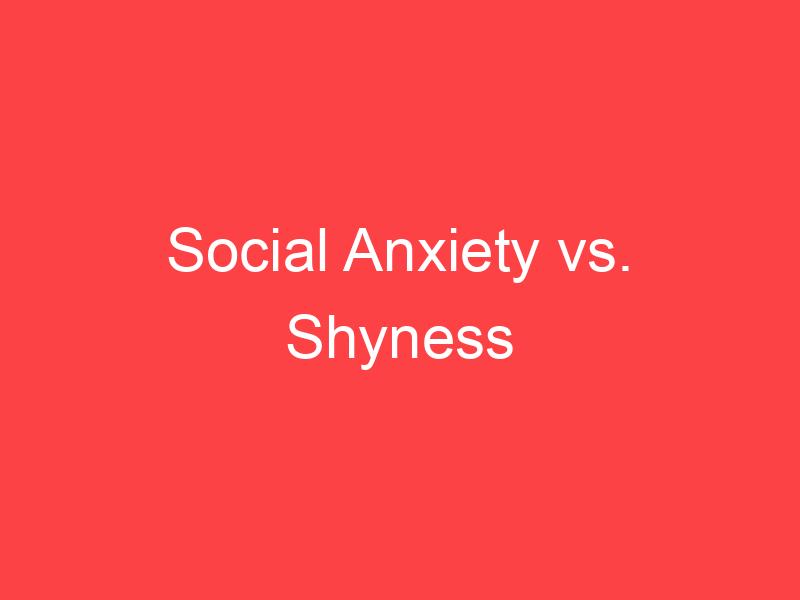Main Difference
The main difference between Social Anxiety and Shyness is that the Social Anxiety is a discomfort or a fear when a person is in social interactions and Shyness is a feeling of apprehension, discomfort or awkwardness in the presence of other people
-
Social Anxiety
Social anxiety is nervousness in social situations. Some disorders associated with the social anxiety spectrum include anxiety disorders, mood disorders, autism spectrum disorders, eating disorders, and substance use disorders. Individuals higher in social anxiety avert their gazes, show fewer facial expressions, and show difficulty with initiating and maintaining conversation. Trait social anxiety, the stable tendency to experience this nervousness, can be distinguished from state anxiety, the momentary response to a particular social stimulus. Nearly 90% of individuals, more of whom are women, report feeling symptoms of social anxiety (i.e. shyness) at some point in their lives. Half of the individuals with any social fears meet criteria for social anxiety disorder. Age, culture, and gender impact the severity of this disorder. The function of social anxiety is to increase arousal and attention to social interactions, inhibit unwanted social behavior, and motivate preparation for future social situations.
-
Shyness
Shyness (also called diffidence) is the feeling of apprehension, lack of comfort, or awkwardness especially when a person is around other people. This commonly occurs in new situations or with unfamiliar people. Shyness can be a characteristic of people who have low self-esteem. Stronger forms of shyness are usually referred to as social anxiety or social phobia.
The primary defining characteristic of shyness is a largely ego-driven fear of what other people will think of a person’s behavior. This results in a person becoming scared of doing or saying what they want to out of fear of negative reactions, being laughed at, humiliated or patronized, criticism or rejection. A shy person may simply opt to avoid social situations instead.One important aspect of shyness is social skills development. Schools and parents may implicitly assume children are fully capable of effective social interaction. Social skills training is not given any priority (unlike reading and writing) and as a result, shy students are not given an opportunity to develop their ability to participate in class and interact with peers. Teachers can model social skills and ask questions in a less direct and intimidating manner in order to gently encourage shy students to speak up in class, and make friends with other children.
-
Shyness (noun)
The quality of being shy; a fear of social interactions.
“His shyness kept him from asking her to the prom.”

